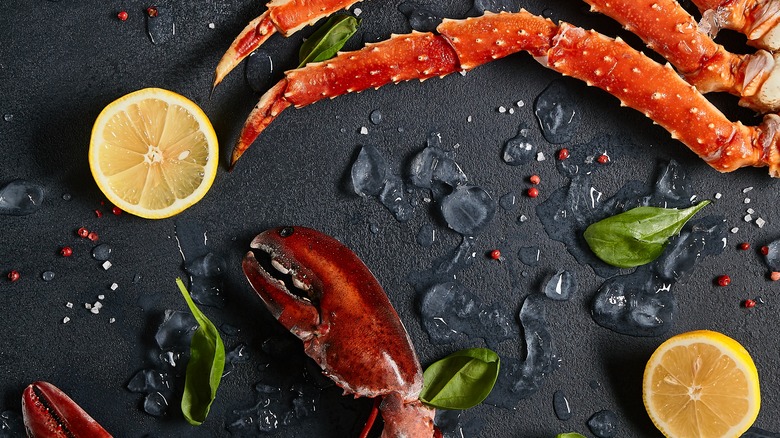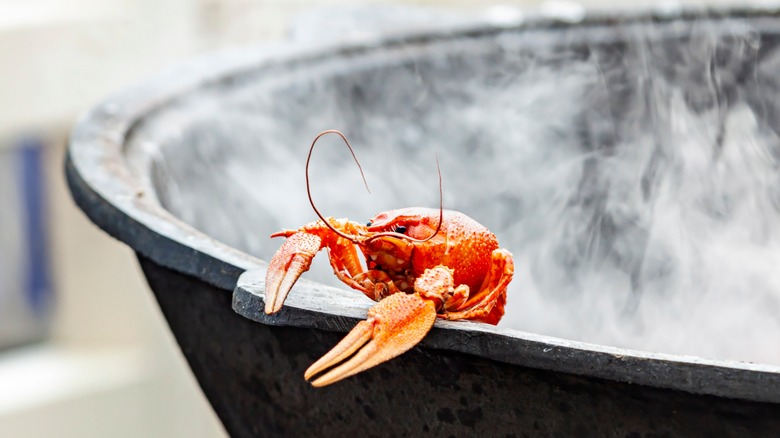Here's Why Crustaceans Are Usually Cooked Alive
Dunking a meaty lobster claw into melted butter can be ultra-satisfying, especially given that you likely put in some work trying to break the shell. Whether it's lobster, crab, shrimp, or any other crustacean, you've probably noticed that they're usually cooked shells-on and alive — but could there be justification for the practice?
What was once branded as peasant food has since been rebranded as a luxury, when it comes to crustaceans like lobsters and oysters, notes Pacific Standard. With time and evolving tastes, Supermarket Perimeter explains that limited supply and increased demand have now caused the prices of shellfish to skyrocket. Naturally, this has created a reputation of being an elite ingredient that everyone wants a taste of.
Whether it's scooped into split-top buns, stuffed into ravioli, or served on top of grits, crustaceans add a sweetly sea-kissed flavor to any dish. But before you can dine on the shellfish, they must first face their fate in a bubbling vat of boiling water. Here's why.
It minimizes the risk of food poisoning
Historically speaking, Business Insider explains that the ancient Romans to the great chefs of the 19th century have been boiling crustaceans alive based on better aesthetics and richer flavors. Although this might seem inhumane, given that lobsters are actually sentient beings, there's a practical reason as well.
According to Science Focus, crustaceans naturally possess a harmful bacteria called vibrio present in their flesh that can multiply rapidly in the decaying lobster once it's dead — and it can't be eliminated by cooking either. So, to minimize the risk of food poisoning, crustaceans are often cooked alive.
That said, many consider the practice to be unethical as crustaceans are living things and consequently, can feel pain. Naturally, this backlash has sparked some countries to ban cooking lobsters alive, requiring that chefs stun or kill lobsters before they're cooked, reports The Telegraph. One thing is for sure, time is of the essence when it comes to cooking this type of shellfish.

